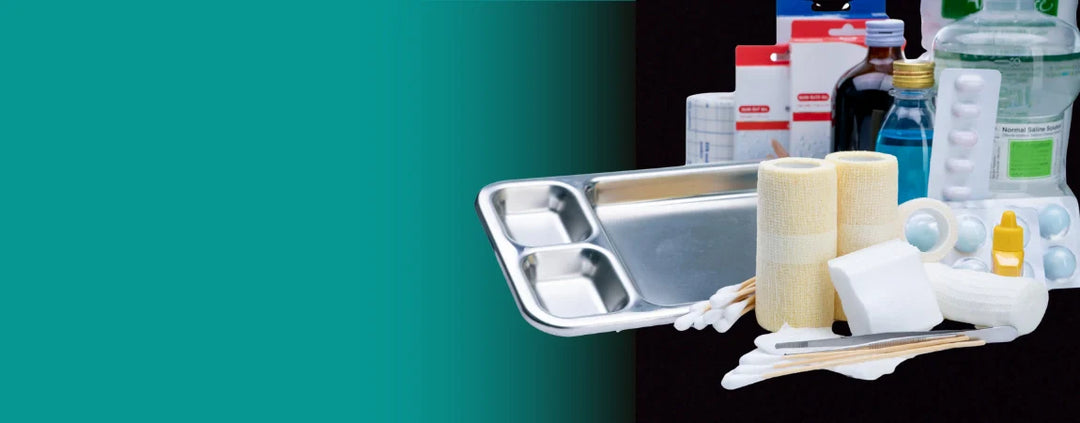Continue reading to learn if silicone sheeting or silicone gel is better for your scar.
How does topical silicone work?
Skin hydration and homeostasis
Doctors agree that silicone, when applied topically to a scar, mimics the occlusion properties of the stratum corneum. The stratum corneum is the outermost layer of the skin that helps maintain skin hydration and flexibility. When a person sustains a wound, the skin’s hydration mechanism can be disrupted and the oxygen and moisture balance in the skin becomes volatile. The ideal oxygen and moisture balance is called homeostasis. To induce hydration and maintain homeostasis of the skin after trauma, silicone can be applied to facilitate a healthy wound-repair response. Topical silicone is semi-permeable, so it allows the user to maintain the perfect balance of oxygen and moisture retention at the scar site.
Collagen regulation
Collagen is the most abundant structural protein in the bodies of most mammals, and plenty of it is present in our skin. When a person sustains a wound, fibroblasts and keratinocytes in the dermis signal collagen production to promote the growth factor and repair the damaged tissue. The skin is constantly producing new collagen, but trauma causes skin cells to go into overdrive and produce excessive amounts of it. This is what causes raised and discolored scarring. Topical silicone regulates collagen production by inhibiting the growth factor and preventing the overgrowth of scar tissue.
Two types of scars most characterized by the overproduction of collagen are keloid and hypertrophic scar formations. Keloids appear as ropey growths on the skin that branch out past the initial wound site. Hypertrophic scars are raised and bumpy, but don’t expand beyond the limits of the wound. Both scar types can be red or purple in appearance and are typically itchy and painful. Topical silicone is an effective treatment option to prevent or reduce the appearance of these scars by hydrating the skin and controlling collagen production.
Silicone gel sheeting
Silicone gel sheeting is a solidified form of silicone that is elastic and has a soft, rubbery texture. These sheets come in square, circular, or rectangular shapes, making them ideal for a variety of different scar sizes. Each sheet or bandage has a tacky backing, allowing for a gentle adhesion that sticks to the skin and covers the entire scar site. Silicone gel sheets are reusable and can be washed with soap and water to expand their lifespan for up to two weeks or more.

Silicone sheeting is the optimal solution for scars resulting from burns, breast reduction surgery, tummy tucks, or C-sections. A typical treatment cycle recommended for optimal results is 8 to 12 weeks. You can apply silicone sheeting to your scar as soon as your wound has healed or the sutures have been removed from your incision. Immature scars that are younger than 12 to 18 months are good candidates for silicone treatment, but improvements can still be made with mature scars.
Silicone ointments
Silicone ointments are an effective alternative to silicone gel sheeting. The same mechanisms of action observed with sheeting—hydration and collagen regulation—are also associated with silicone ointments. For some, the only difference is the convenience factor. 
Silicone ointments are suitable for scars on the face or on a highly mobile and/or exposed area, like an elbow or a wrist. And because silicone gels come in a compact tube, they can be taken anywhere and applied on the go. As a general rule, silicone ointments should be applied to a scar 2 or 3 times daily for 8-12 weeks. Some silicone ointments don’t dry quickly and may be sticky to the touch. One must also be careful not to get silicone on clothes or other fabrics like bed sheets, as they have the propensity to stain.
The verdict
Silicone sheeting and silicone ointments are both highly effective and safe methods for flattening and reducing the appearance of keloid and hypertrophic scars. The decision to use one over the other depends on personal preference, scar size, and scar location. 
Both of these product types, in addition to silicone scar sticks, can be purchased from Biodermis, a leader in silicone gel technology and scar management for the past 30 years. Biodermis offers an array of unique silicone products, like Epi-Derm Silicone Gel sheets that come in a variety of shapes, sizes, and colors. Xeragel by Biodermis is a 100% medical-grade silicone ointment recommended for the treatment of all scar types. As an alternative to silicone sheets and ointments, Biodermis also offers Pro-Sil , the award-winning silicone scar stick that comes in a convenient glide-on applicator.
Biodermis is an innovative market leader with 30 years of expertise in the medical silicone industry. Visit Biodermis.com today to explore a complete range of scar management and post-operative care solutions.
Biodermis offers custom tailored referral programs designed to simplify and reduce the cost of your patients' post-op care. Additionally, we offer professional pricing if you opt to retail our products. Give us a call at 800.322.3729, and we will be happy to provide additional details on these programs.


